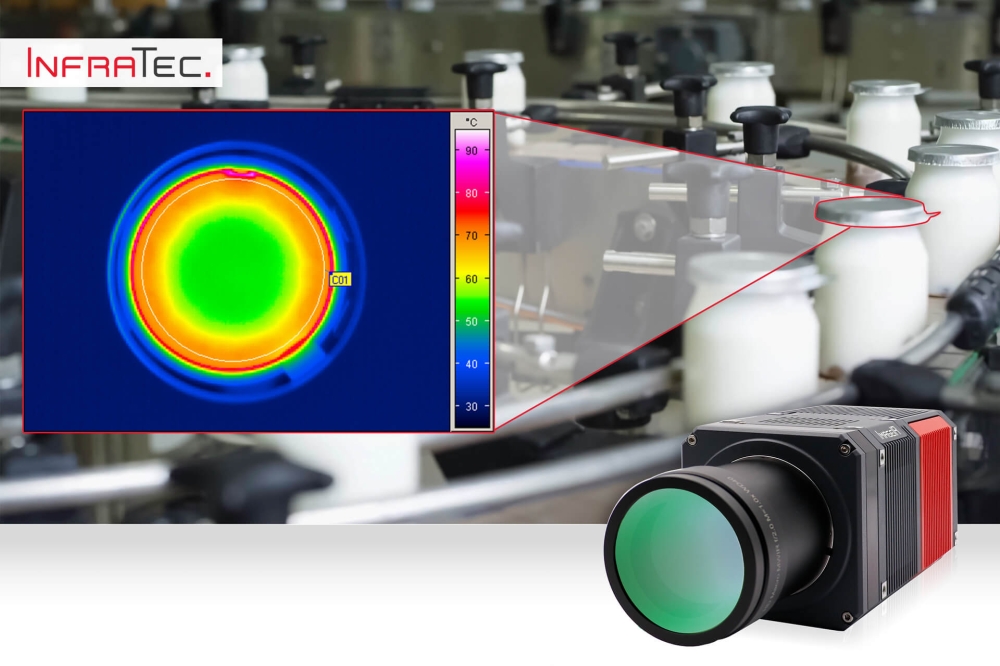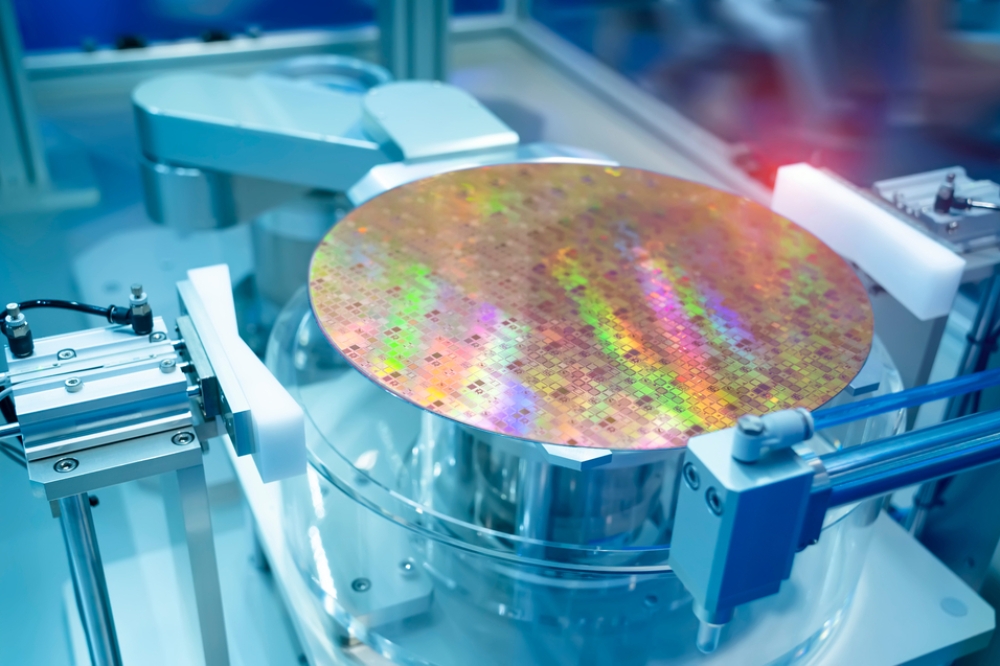CVD diamond resolves thermal management issues in high performance electronics
Gallium nitride (GaN) and advanced silicon technologies offer sizeable power density enhancements compared to legacy solutions. But greater density presents thermal management challenges. Designers typically de-rate performance, add bulky heat spreaders or utilize active heat dissipation to ensure resilience and longevity. According to Element Six, CVD diamond could offer more effective, smaller and less complex solutions for 5G and other high power electronic systems. By Firooz Faili, Head of CVD Thermal Products at Element Six.
Diamond possesses a remarkable set of properties, making it the most effective material for solving thermal management problems. Microwave assisted undoped CVD (chemical vapor deposition) enables control of grain size, grain purity and grain interfaces to generate high-quality, high repeatability, polycrystalline diamond at the targeted thermal conductivity level needed for particular applications. Commercially, CVD diamond is readily available in six different grades with thermal conductivities ranging from 700 to 2000 W/mK and bulk resistivity from 0.001 Wm for doped diamond to 1012 Wm for undoped diamond.
A crucial element in developing disruptive technology is the control of basic building block engineering. The use of CVD grown diamond as a high-performance heat spreader can ensure the effective performance of a wide range of disruptive electronics from GaN solid state RF X-band PAs to advanced ASICs to laser diodes. Naturally, understanding the fundamentals of the science and engineering of the thermal properties of grown diamond is an essential part of this process. Element Six, part of the De Beers Group of companies, has spent over 25 years in developing, understanding and characterizing CVD technology and CVD diamond material, operating worldwide with primary manufacturing facilities in the UK and US.
Diamond, the ultimate substrate material
In designing a thermal management system, it is important to consider both the material and the application methodology to minimize channel temperatures and deliver long-term device operation. To date, the integration of SiC (400 W/mK) substrates with GaN has provided the best option for GaN HEMT and MMIC technology for high power applications. However, despite the use of SiC substrate, adequate heat spreading is still the limiting factor in determining the maximum power dissipation for GaN based electronics. As such, the path to long-term reliability is often achieved by de-rating the maximum power dissipation. A far better heat spreading solution incorporating CVD diamond (2000 W/mK) has the potential for a factor of 3× or greater increase in power density relative to current state-of-the-art GaN devices. (Figure 1 compares performance of various substrate materials.)
While GaN-based electronics are capable of delivering ultrahigh current and power density performance, the failure of many high-end electronic systems is directly attributable to the lack of adequate thermal management.
Semiconductor devices continue to increase in power density. For high power RF and Optoelectronics, using CVD diamond enables devices to run at increased power levels without raising junction operating temperature, thereby delivering longer lifetimes and better reliability.
Figure 1: Comparison of CVD diamond with ‘traditional’ heat spreading materials
A packaged RF application example
To demonstrate the impact of a diamond heat spreader in a practical example, an RF-amplifier design was analyzed. In this example, a packaged VDMOS (Vertical Diffused Metal Oxide Semiconductor) power amplifier was initially made with a BeO (Beryllium oxide) heat spreader on a CuMo (Copper / Molybdenum) flange. The end-user was interested in lowering the overall thermal resistance of the system design while also avoiding the use of BeO due to its toxicity.
Boron doped, electrically conductive CVD diamond, a unique material for high frequency packaged electronics.
As an electrically conductive heat spreader, thick, boron doped diamond (BDD) with metallic conductivity (0.05 Ω-cm resistivity) is an ideal replacement for the commonly used metal/diamond configuration or other heat spreaders such as copper, copper/refractory or copper laminate. Mounting of RF/microwave devices on a BDD heat spreader enables better isolation of the ground plane at below 1.5 GHz, and in reduction of conductive losses at and above 1.5 GHz due to the increased skin depth.
RF current flows on a metal surface and for typical metals (Cu or Au) at above 1.5 GHz the already very thin skin depth continues to decrease with increasing RF frequency. The decrease in skin depth results in a surface resistance increase and hence increasing conductive losses. Above 1.5 GHz, in comparison to Cu and Au, BDD has nearly two orders of magnitude greater skin depth at the same RF frequency (Figure 3). The higher conduction cross-section of BDD not only enables better RF performance by improving the ground-plane isolation, but also in reducing conductive losses at higher frequencies. Using thick BDD with metallic conductivity, instead of the standard metal/diamond enables better isolation of the ground plane below 1.5 GHz by increasing the skin depth. The metallic-like heat spreader reduces the slow wave mode and the capacitive coupling between ground planes found in metallised dielectrics below 1.5 GHz. It should be noted that a gold metallization might still be beneficial in reducing the electrical resistance of the BDD substrate.
Figure 2 demonstrates the temperature profile junction-to-case for one of the optimal designs derived from this modelling. The CVD diamond heat spreader solution was found to have 30% lower thermal resistance at 0.300 mm in thickness at a thermal conductivity of 1000 W/mK (the original solution used a 1.00 mm thick BeO heat spreader). The lower thermal resistance of the diamond heat spreader has led to this device functioning with better RF linearity performance and with improved reliability due to its reduced junction temperature.
For electronic applications operating below 1.5 GHz, the standard metallized diamond heat spreader (1000-2000 W/mK) may introduce unwanted couplings between grounds due to the capacitive coupling of the metallized ground plane at this frequency range. In this region it is functionally beneficial to sacrifice some of the ultra-high thermal conductivity of diamond by making it electrically conductive.
CVD diamond, the future of high frequency resistive components
Though the frequency range of 5G network system is not yet decided, the standardization of 5G network system is well underway.
While the network communications (between each base station) system will be using the 28-30 GHz frequency range to achieve a high data rate of exchange, it is expected that 6-8 GHz and/or up to 10 GHz will be used for personal cellular connections. On the amplifier front, GaN-based HEMTs appear to be the only solution for high power/high frequency operation in the 28-30 GHz range.
Currently most major network system manufacturers (Ericsson, Nokia, Huawei, etc.) are focusing on a method of phased array (128 channel) communication for 5G in the 6-8 GHz frequency range. With increasing frequencies there is a need for component size reduction, which results in increasing demand for more efficient thermal management. CVD diamond is uniquely positioned to provide the solution not just for amplifiers, but also as a resistive component for devices such as isolators, limiters and phase shifters.
The millimeter wave market demands solutions that offer gigahertz performance at high output power levels. With the designation of the operating spectrum for 5G at above 6 GHz, and high-performance phased array radars operating in the X- and Ku-bands, there is significant drive for passive components able to handle high power density at higher frequencies. To date beryllium oxide (BeO) and aluminum nitride (AlN) have been the preferred substrates for high power RF resistors. These ceramic materials have relatively high thermal conductivity and enable resistors to handle tens to hundreds of watts when operating at L- and S-bands (1-4 GHz).
However, when operating from X-band up to Kuband (8-30 GHz), the trade-off between maximizing the dissipated power and reducing resistor parasitic effects leads to a diminished ability to dissipate a few watts when using BeO or AlN substrates. This limitation in management of power at higher frequency will become a bottleneck for extending high power applications above S-band. What is proposed here is an enabling solution for RF resistors capable of operating above 8 GHz while handing over 100 W by using CVD diamond as the resistor substrate.
Figure 4 summarizes the values of the key parameters affecting performance for the different high thermal conductivity substrates used in RF resistors. It is evident that AlN, with the highest permittivity and the lowest thermal conductivity will perform worse than BeO, and that diamond—having the best combination of low permittivity and highest thermal conductivity – would excel as a high frequency resistive substrate. Diamond’s permittivity is ~15-35% lower than those of BeO and AlN respectively and remains stable with changes in frequency and temperature, varying by only 5% from low frequencies up to tens of gigahertz, and only shifting by 730 ppm/°C from room temperature up to a few hundreds of degrees centigrade. Temperature is also important when considering thermal conductivity. At 125°C the thermal conductivity values for AlN and BeO are reduced by 30-40% compared to performance at room temperature.
Thermal conductivity of the purest single crystal diamond may exceed AlN and BeO by a factor of ~10-15, which roughly means that a resistor using diamond should be able to handle 10-15 times more power. When considering polycrystalline diamond as a resistive substrate with thermal conductivity ranging from 1000 W/mK to 1800 W/mK, a 4-8x improvement in performance over that of AlN and BeO could be realized.
Figure 3: Skin depth for conductors at increasing operation frequency. Boron doped diamond heat spreader at various frequencies
A word on cost
A subject worthy of an extended article by itself, the cost of diamond heat spreader technology should be viewed from two primary angles. Firstly, a consideration of cost should be made when standard heat spreaders cease to perform in cooling high power density devices in RF, microwave and ASICs. Secondly, and perhaps more importantly, is that the cost of performance improvement could and should always be optimized multi-dimensionally. The ratio of device to spreader area, the spreader thickness and the CVD diamond heat spreader thermal conductivity all play primary roles in controlling thermal resistance and cost. As a result, it is imperative to follow a proper performance/cost model to optimize diamond heat spreader benefits.
Figure 4: Resistive substrates properties (permittivity, loss tangent, thermal conductivity and thermal expansion)
Summary
Significant thermal-management improvements within electronic systems can be realized by using CVD diamond. The integration is relatively straightforward as CVD diamond can be a direct replacement for AlN (Aluminium nitride), BeO (Beryllium oxide) or other advanced ceramics. Attention to detail at the interfaces is important to keep overall thermal resistance low, thereby optimizing the effectiveness of the diamond.
Through improved synthesis technology, advanced processing and on-going cost reduction efforts, CVD diamond has become a crucial enabler as a heat spreader and heat dissipater for high power density RF applications. It is expected that this trend will continue in the years to come, in line with the ever-increasing need for smaller and more powerful electronic devices and systems, including the growing demand for defense as well as upcoming 5G wireless applications.















































